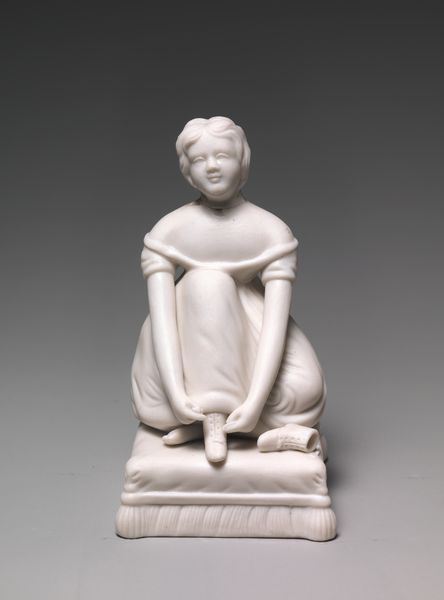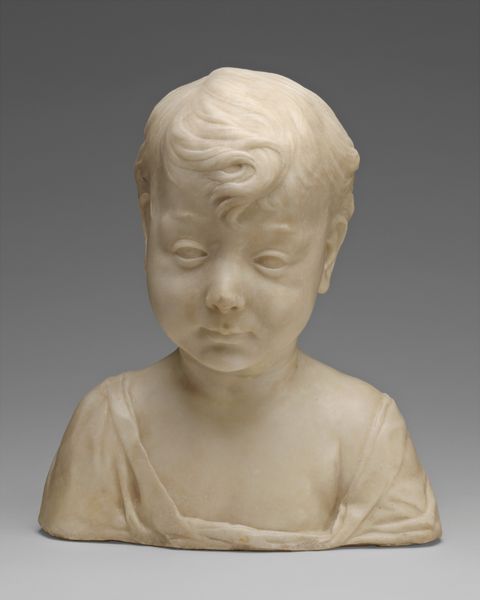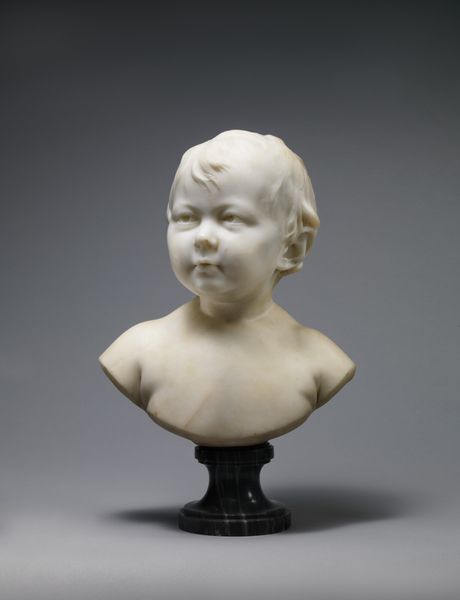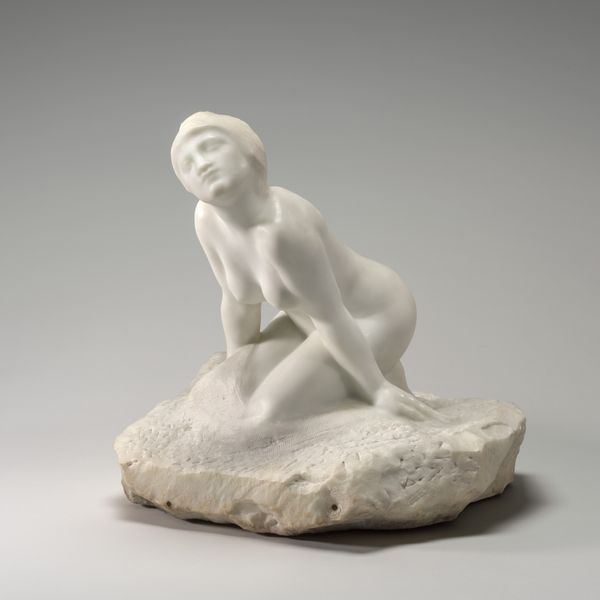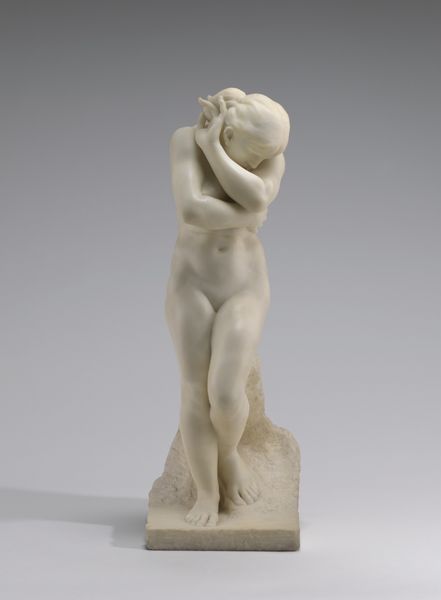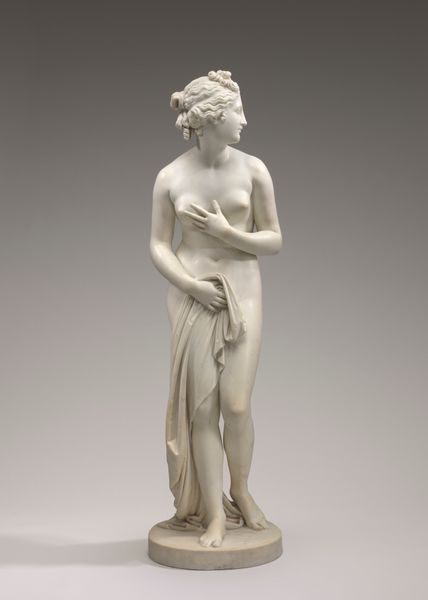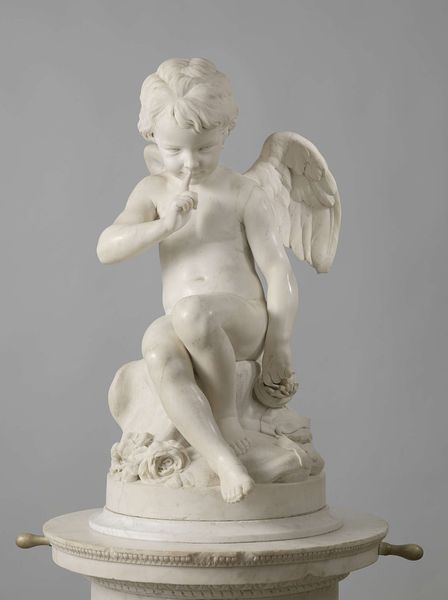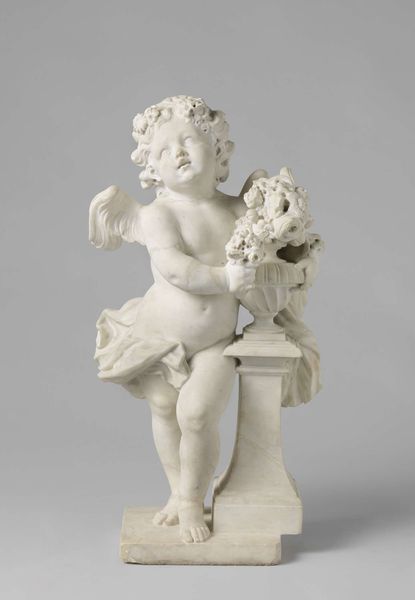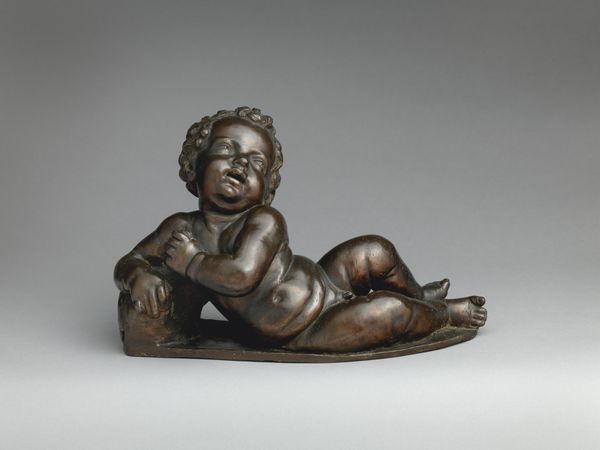
ceramic, porcelain, sculpture
#
ceramic
#
porcelain
#
figuration
#
sculpture
#
decorative-art
Dimensions: Overall (confirmed): 9 3/8 × 4 1/2 × 5 1/4 in. (23.8 × 11.4 × 13.3 cm)
Copyright: Public Domain
Curator: Here we have “The Lord’s Prayer,” a porcelain sculpture created between 1842 and 1852 by Minton. It's a pristine piece housed here at the Metropolitan Museum of Art. Editor: It’s strikingly austere. The pure white porcelain and the kneeling child—it evokes such a potent blend of innocence and supplication. It almost feels frozen in time, capturing a moment of profound vulnerability. Curator: Absolutely. Porcelain itself carried significant cultural weight during the Victorian era. Its purity was linked to moral virtue, and its preciousness signaled refined taste and elevated status. Images of childhood, particularly those with religious overtones, were very popular, serving as reminders of piety and domestic virtue. Editor: And that connection is crucial. A kneeling child represents an interesting paradox, doesn't it? We have an iconic visual of complete submission coupled with, ideally, humanity's purest, least corrupted form. It reinforces existing power structures through its sentimental appeal. The church benefits and so does society, both predicated on these virtues. Curator: The symbol is powerful precisely because it carries so many layers of meaning. It’s not just religious devotion; it's societal expectation projected onto the individual. Childhood was increasingly being seen as a time of innocence, needing protection. To show this figure kneeling also speaks to ideas of moral teaching and guidance. Editor: Though what strikes me the most is the anonymity. The generalized features contribute to that symbolic power, enabling it to function as a projection screen. Is that a calculated element of these kinds of devotional sculptures, do you think? To avoid the potential distractions of an individualized person? Curator: Very possibly. And it’s also a testament to the sculptor’s technical skill. Working with porcelain like this is an exercise in delicate balance and the mastery of detail. It is a potent reminder of faith and morality, but its reception certainly has transformed over the decades. Editor: Yes, so while on one hand we can note its original function, the enduring impact is still clear, prompting thought about our individual relationship with virtue, with duty and how religious symbols carry and evolve over time. Curator: Exactly. It allows us a moment to think through what it is to be guided, by religion or other societal powers and how such symbols evolve and embed over time.
Comments
No comments
Be the first to comment and join the conversation on the ultimate creative platform.

